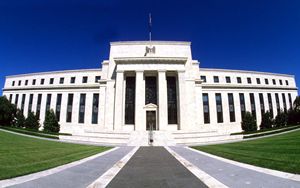(Finance) – Analysts expect today’s meeting of the US central bank to conclude with another 25 basis point hike and fed funds rates at 5.25%. This could, moreover, be the last rise of rates in the United States after 14 months of uninterrupted adjustments, with inflation which has already begun to moderate for some months and with the economy raising concerns, as seen in the weakening of some macroeconomic indicators.
The Fed’s Federal Open Market Committee (FOMC) could pave the way for one “watchful waiting” pauseaimed at evaluating the effects on the cycle and inflation of the monetary restriction already implemented and the repercussions of the banking crisis on the availability of credit and, therefore, on final demand.
With analysts taking the magnitude of the rise in the cost of borrowing all but for granted, attention turns to the words that will be used in the statement and by the Federal Reserve chairman. “The forward guidance and the press conference by President Powell will be more important than the 25 basis point hike as the Fed seeks to communicate a pause in its hiking cycle, retaining the option to hike or hold into June and beyond,” said Frederik Ducrozet, head of the macroeconomic research by Pictet Wealth Management “There will be no new dot plots or economic projections, so it will be any description is essential by the president on where the rate policy should be restrictive enough,”” he added.
The decision by US central bankers comes at a time when the situation of US banks, particularly the regional ones, has once again caused concern, despite JPMorgan’s bailout of First Republic Bank. The KBW Regional Banking Index, which tracks medium-sized banks, lost 5.5% in yesterday’s session.
“The fallout from banking sector stress is uncertain, while inflation and wages have proven persistent since the March FOMC meeting,” said Tiffany Wilding, PIMCO’s North American Economist. next Fed move than it has been in several quarters.In our view, to give time to assess the impact, the most likely trade-off is to prepare for a pause, but one conditioned by incoming data and maintaining a greater upside bias for the next move of the central institution”.
According to Jack Janasiewicz, Natixis Investment Managers Solutions, however, a break is not “a change of course“. “A breakthrough implies a move to cuts later in the year – he explained – We’re not so sure. We expect the Fed to keep rates elevated for a while longer, as a longer-term hike will remain its policy of choice to bring inflation back to its stated 2% target.”
